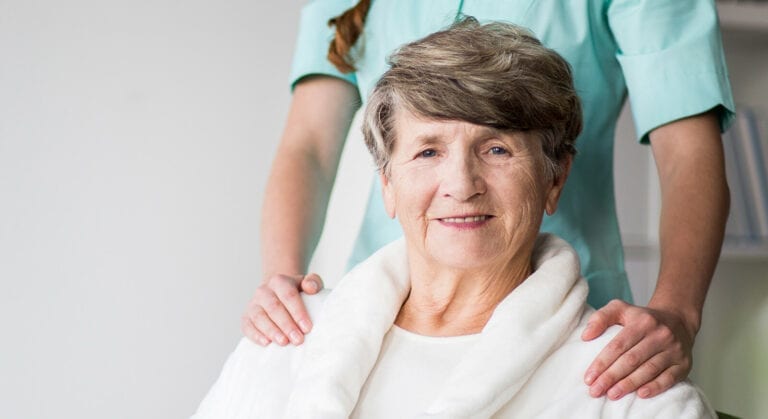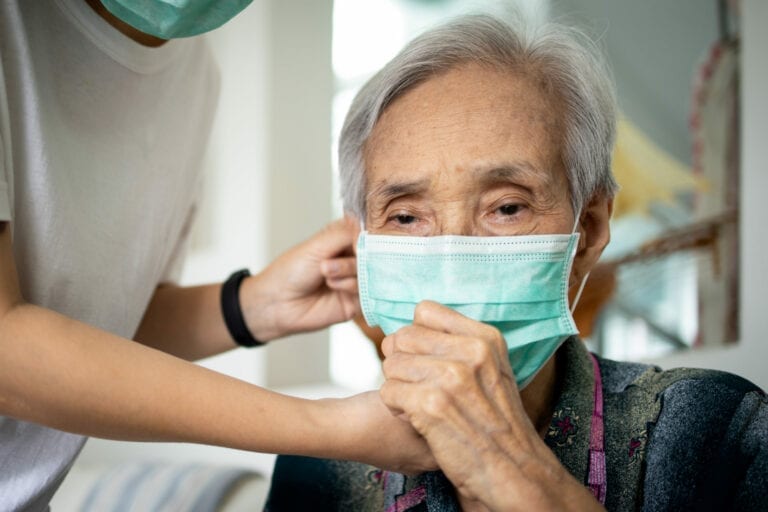As climate change accelerates, its effects are increasingly being felt across all age groups — but none more so than older adults. In 2022, over 79 million people aged 60 or older lived in the United States, making up more than 20% of the total population. As this demographic continues to grow, understanding how climate change affects their health is not just timely — it’s essential.
At From The Heart Home Care, we recognize the importance of providing safe, responsive care that adapts to the challenges posed by our changing environment. In this article, we explore the key threats climate change poses to older adults, and what can be done to reduce those risks.
Why Are Older Adults More Vulnerable to Climate Change?
Aging naturally brings physical, physiological, and immune system changes. These changes make older adults more susceptible to environmental hazards caused by climate change. Factors contributing to their vulnerability include:
- Decreased ability to regulate body temperature, making it harder to cope with heat.
- Chronic health conditions such as heart disease, COPD, or diabetes that may worsen in extreme weather.
- Limited mobility, reducing their capacity to evacuate or respond quickly during emergencies.
- Weakened immune systems, increasing susceptibility to infections and vector-borne diseases.
- Dependency on caregivers or home medical equipment, which may be disrupted by power outages or disasters.
- Social isolation or financial limitations, which can hinder access to information or emergency resources.
Key Climate-Related Health Threats to Older Adults
Climate change manifests in many ways — rising temperatures, poor air quality, extreme weather, and the spread of diseases. Each of these factors can have serious health consequences for older adults.
1. Heat-Related Illnesses and Death
Rising temperatures and heatwaves are among the most immediate dangers. Older adults are at greater risk of heat exhaustion, heatstroke, and dehydration. In fact, people aged 65 and older accounted for more heat-related hospitalizations than any other group between 2001 and 2010.
Certain medications and age-related changes reduce the body’s ability to cool itself. Urban areas, where many seniors reside, experience the urban heat island effect, where concrete and asphalt retain heat and make cities even hotter.
How to help:
- Encourage hydration and cool environments.
- Schedule outdoor activities in the early morning or evening.
- Use fans or air conditioners during heatwaves.
- Monitor for signs of heat stress: dizziness, confusion, or dry skin.
2. Respiratory Illnesses and Air Pollution
Climate change is worsening air quality through increased ground-level ozone, wildfires, and dust storms. These airborne pollutants can trigger asthma, bronchitis, and COPD — especially harmful to seniors with preexisting respiratory conditions.
Over 4 million seniors already suffer from asthma, and air pollution also increases the risk of heart attacks and cardiovascular strain in older populations.
Additionally, rising CO₂ levels and changing precipitation patterns extend pollen seasons, worsening allergies and respiratory issues.
What caregivers can do:
- Track local air quality indexes (AQI) and limit outdoor exposure on high-pollution days.
- Use air purifiers in the home.
- Keep medications like inhalers readily available.
- Address indoor air quality by preventing mold and maintaining proper ventilation.
3. Vector-Borne Diseases (Mosquitoes and Ticks)
As temperatures rise, the geographical range and activity periods of disease-carrying insects are expanding. This means older adults are now at a greater risk of contracting diseases like:
- West Nile virus, transmitted by mosquitoes, which can be fatal in seniors with compromised immune systems.
- Lyme disease, spread by ticks, which affects adults aged 55–79 at the highest rates and can lead to chronic joint pain, fatigue, and neurological issues if untreated.
Tips for prevention:
- Wear long sleeves and pants when outdoors.
- Use insect repellent with DEET or natural alternatives.
- Check for ticks after gardening or walking in grassy areas.
- Eliminate standing water around the home.
4. Water-Related Illnesses and Storm Damage
Floods, hurricanes, and heavy rainfall — all made more frequent by climate change — can contaminate water supplies and increase the spread of bacteria, parasites, and waterborne diseases. Seniors with weakened immune systems are at higher risk of serious gastrointestinal infections from unsafe water.
Flooding also damages homes, causing mold growth and structural issues that can lead to respiratory problems and physical injury.
Care strategies:
- Use only bottled or boiled water if flooding occurs.
- Repair leaks and dry out water-damaged areas quickly.
- Regularly check for mold in the home, especially in basements or bathrooms.
5. Increased Risk of Injury and Death in Extreme Weather Events
Older adults often have difficulty moving quickly or managing complex evacuation procedures. During extreme events like hurricanes or wildfires, mobility limitations and medical dependencies put seniors at heightened risk of injury or death.
For example, when Hurricane Ida struck Louisiana in 2021, at least 10 older adults died from heat exposure after power outages disabled air conditioning and medical equipment.
Preparedness recommendations:
- Create an emergency kit with medications, water, flashlights, and health records.
- Register with local emergency services for evacuation assistance.
- Maintain a backup power source for medical devices.
- Keep a list of emergency contacts and communicate regularly during events.
Learn More: What is the Difference Between a Caregiver and a Live-in Caregiver?
6. Mental Health Impacts
Climate change doesn’t just affect physical health — it can also take a psychological toll, especially on older adults. Disasters can lead to trauma, anxiety, depression, or post-traumatic stress.
Seniors living alone or with cognitive conditions such as dementia or Alzheimer’s disease may feel overwhelmed by environmental changes or be unable to fully understand warnings and safety procedures.
Prolonged exposure to air pollution has also been linked to cognitive decline, affecting memory, attention, and decision-making.
Mental health support includes:
- Offering companionship and regular check-ins.
- Providing clear, simple communication during emergencies.
- Connecting older adults with counseling or support groups.
- Promoting daily routines, hobbies, and social interaction.
Overlapping Vulnerabilities: When Climate Threats Multiply
Many older adults experience compounded risks due to social, economic, or health-related factors. Some examples include:
- Low-income seniors who may not afford air conditioning or medical care.
- Communities of color and immigrants, who statistically face higher rates of chronic conditions and have less access to healthcare.
- Isolated individuals without family or community support, making them more vulnerable during disasters.
Recognizing these overlapping vulnerabilities is essential for providing personalized and inclusive care.
What You Can Do to Protect Older Adults from Climate-Related Health Risks
At From The Heart Home Care, we believe in proactive, compassionate care that responds to the realities of our changing climate. Here’s how families, caregivers, and communities can help:
1. Stay Informed
- Sign up for local weather alerts and AQI updates.
- Learn about seasonal health risks in your region.
- Monitor loved ones for signs of heat exhaustion or respiratory distress.
2. Create Emergency Plans
- Develop an evacuation plan tailored to the older adult’s mobility and medical needs.
- Prepare emergency kits with essentials, including medications, documents, water, and non-perishable food.
3. Promote Environmental Health at Home
- Use HEPA filters and dehumidifiers to maintain indoor air quality.
- Ensure proper insulation and ventilation.
- Address leaks and mold issues promptly.
4. Advocate and Educate
- Support climate-resilient infrastructure and senior services in your community.
- Talk with healthcare providers about how climate risks may impact your loved one’s conditions.
- Participate in workshops or support groups that discuss aging and climate adaptation.
Learn More: The Benefits of Post-Acute Rehabilitation Care
Resources for Further Reading
- EPA Climate Change Adaptation Plan
- Extreme Heat and Older Adults – CDC
- National Institute on Aging: Emergency Preparedness for Seniors
- Climate Change and Health Equity – World Health Organization
Conclusion
Climate change poses a significant threat to the health, safety, and independence of older adults. From heatwaves and respiratory illness to mental health and mobility challenges during extreme events, the risks are both numerous and severe.At From The Heart Home Care, we’re committed to providing not just day-to-day support, but care that anticipates and mitigates the growing challenges of our time. By staying informed, prepared, and compassionate, we can help protect our aging loved ones and ensure they thrive — no matter what the climate brings.







